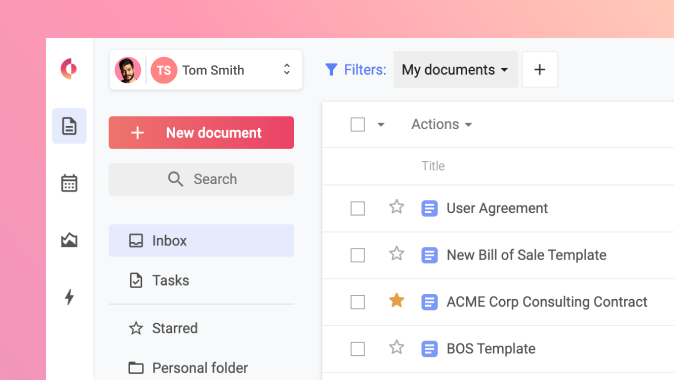Contract Management Platform Myths
When people think of contract management, many presuppositions come to mind. Which of these are true—and which aren’t?
When approaching contract management, many people have expectations shaped by decades of legacy solutions or the hassle of using fragmented tools to piece together the full process. Even if an organization has switched to a single contract management platform, not all are equal, and assumptions about the norm are easy to make. Here are some contract management myths and why no business should accept these as the standard.
Myth #1: The business will lose control, visibility, and easy access to contracts.
The ability to find, search, and manage contracts is much easier in the cloud than offline. Control actually increases, as a contract management platform enables administrators to control who has access at what time and have a better overview of the entire process. Access is easy—both to give to others and limit if it’s not necessary. Powerful tagging and search features make it easier than trying to remember the name of a contract from years ago.
Myth #2: The platform isn’t as secure as what the company was using before.
The cloud is the most secure, trustworthy way to do business. In fact, many companies have security standards that mandate a cloud-based system be used. That doesn’t mean the cloud is without its issues, which is why it’s important to be sure a contract management platform has bank-level security. Keeping documents in the cloud as opposed to on desktops or cloud-based storage solutions that aren’t as secure makes a difference in customer trust and loyalty.
Myth #3: Implementation will be long and difficult.
Implementation should be talked about in terms of days or weeks, not months or years. If implementation begins to stretch out over a long time, enthusiasm for the platform can wane and the likeliness of adoption decreases. While teams should receive training, a contract management platform should be simple, easy, and intuitive to use.
Myth #4: It’s only necessary to have one template and use it for everything.
Once a platform is in full use and users are creating new contracts directly from the platform, many times one template is used for most contracts. It’s important to create different templates for different use cases—another one of the advantages of tagging and access, as users can see only the most relevant templates they need.
Myth #5: The platform will eliminate other valuable tools or won’t work with other software the organization uses.
While a platform may eliminate some of the tools used, this only means faster workflows and more streamlined processes, as there’s no need to switch back and forth between products. A single source of truth increases efficiency and the ability to scale faster as manual tasks and time wasted are removed. For products the platform doesn’t cover (for example, a CRM), a platform should offer integrations or an open API that will push or pull all the relevant metadata to create a business ecosystem.
No organization should accept these myths as the norm. If a contract management platform does contain any of these issues, it may be time to look around for another solution. With these myths proven wrong, there’s no better time to consider implementing the best contract management platform to change how companies buy, sell, and manage their future.



